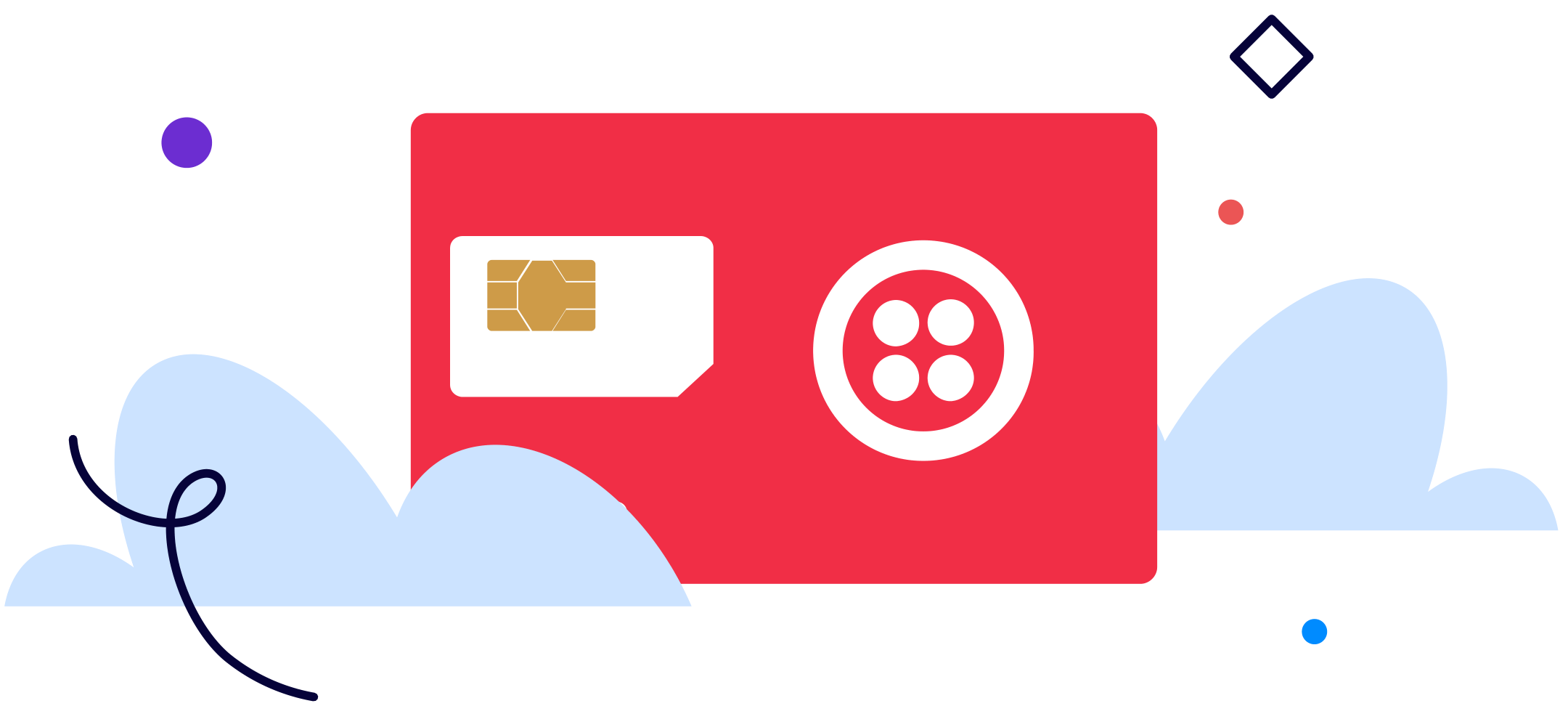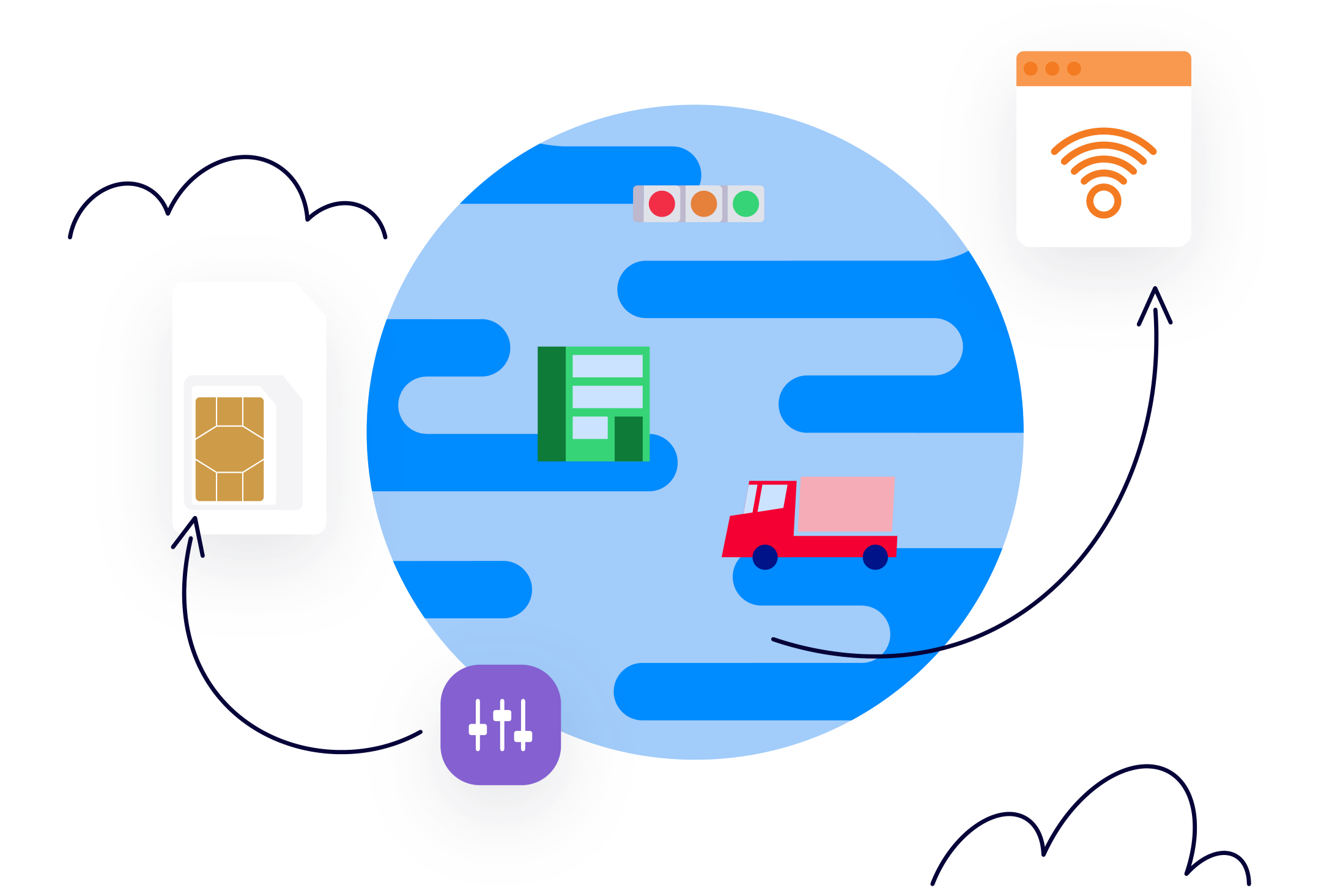

IDC Infobrief: Keys to Cellular IoT Success
What are the key growth indicators for cellular IoT and the challenges standing in the way? This IDC infobrief identifies key growth indicators, examines challenges and opportunities for cellular IoT connectivity management.

In January of 2021, IDC surveyed over 1,000 IoT decision makers about their
current experiences with – and future plans for – cellular IoT deployments.
We surveyed companies in 3 major countries which included: the United States, United Kingdom, and Germany.
We surveyed companies of all sizes. From those with 100 employees up to 5000 employees.
We surveyed across multiple industries: Healthcare, Manufacturing, Government, Retail/wholesale, Utilities, and Transportation
75%
Stationary devices lead cellular usage:
Cellular IoT is often thought of as the connectivity of choice for IoT devices on the move. According to respondents, however, 75% of their cellular connected IoT devices were stationary in nature, demonstrating that cellular is beneficial for both stationary or mobile devices.
75%
Top use cases solve for operational efficiency and security:
Examples:
- Smart lighting
- Smart HVAC
- Connected elevators
- and more
Top use cases solve for operational efficiency and security:
The top three use cases across verticals are:
Top use cases solve for operational efficiency and security:
Examples:
- Climate monitoring
- Temperature control
- Soil monitoring
- and more
Top use cases solve for operational efficiency and security:
The top three use cases across verticals are:
Top use cases solve for operational efficiency and security:
Examples:
- Alarm systems
- Physical access
- Remote monitoring
- and more
Top use cases solve for operational efficiency and security:
The top three use cases across verticals are:
Early IoT adopters drive the top verticals:
While organizations see value across a variety of IoT solutions, the top three verticals are:
Average device fleet sizes range in the thousands:
The average size of cellular connected device fleet deployments is 1,700 devices across
all company sizes; for large companies, the average is 6,300 devices.
83%
of organizations manage device fleets of 100 or more devices
99%
of organizations plan to launch additional connected products and solutions
into the market over the next 12 months.
Network Quality and Choice Are Growing Imperatives
Organizations want control over network choice
Tap to reveal
Organizations want the ability to select which radio technology (i.e., 2G/3G, 4G, 5G) their devices connect to and are highly concerned with the possibility of their devices being steered to networks with incompatible radio technologies, resulting in service disruption.
Network quality and availability are key concerns
Tap to reveal
Organizations are especially concerned with limited access to Tier 1 networks via one SIM, network quality degradation when devices are in motion, as well as poor troubleshooting capabilities and no failover options during network outages.
4G will continue to lead in the near future
Tap to reveal
9%
of respondents are using 5G for their cellular IoT projects
79%
The majority of respondents are currently using 4G for their cellular IoT deployments.
4G is expected to maintain strong prevalence in the market due to its broad applicability across use cases and the sunset of 2/3G networks.
Despite the significant market opportunity across verticals and planned device growth, organizations are still struggling to get new products out to market fast enough.
What is the average time to get to proof of concept?
6
MONTHS

Most organizations hope to be able to launch their products within 6 months...
12
MONTHS
Yet in reality, it takes the average organization 12 months
to go from ideation to proof of concept.
Lack of visibility into domestic and global device deployments and usage
Trying and Ordering SIMs, and Usage Visibility Are Critical Pain Points
The top three challenges that slow projects considerably and hinder project success for cellular IoT solution are:
Ordering and shipping SIMs and modules in a timely manner
Trying and Ordering SIMs, and Usage Visibility Are Critical Pain Points
The top three challenges that slow projects considerably and hinder project success for cellular IoT solution are:
Inability to try SIMs during evaluation
Trying and Ordering SIMs, and Usage Visibility Are Critical Pain Points
The top three challenges that slow projects considerably and hinder project success for cellular IoT solution are:
65% of organizations report paying for overages and unused data
Most Organizations Are Leaving Money on the Table
Data costs and pricing models are top concerns for organizations:
65% of organizations report paying for overages and unused data
Pooled pricing is the dominant pricing model, often with overages baked in
Most Organizations Are Leaving Money on the Table
Data costs and pricing models are top concerns for organizations:
Pooled pricing is the dominant pricing model, often with overages baked in
The #1 issue reported with carrier management is keeping costs under control
Most Organizations Are Leaving Money on the Table
Data costs and pricing models are top concerns for organizations:
The #1 issue reported with carrier management is keeping costs under control
Managing Multiple Carriers Is a Challenge for both Domestic and Global Deployments
What is your top challenge for managing multiple carriers?
58%
of respondents with domestic-only deployments have multiple mobile carriers
66%
of respondents with international deployments have multiple mobile carriers
More than 50% of the organizations manage multiple mobile carriers
The top challenges for managing multiple carriers:
Billing complexity
For organizations with multiple domestic mobile operators, the top challenge is multiple bills to reconcile, normalize and pay
Cost
For organizations with multiple global mobile operators, the top challenge is overage fees
Need for Automation to Lower Total Cost of Ownership
The top five areas where organizations are struggling:
1
High cost of integration into backend systems
(development/third-party costs)
2
Lack of developer tools, resources and support
3
Limited or poor quality APIs, API uptime and helper libraries
4
Lack of debugging capabilities or M2M SMS APIs when data service is unavailable
5
Lack of open-source software development kits
High cost of integration into backend systems
(development/third-party costs)
Lack of developer tools, resources and support
Limited or poor quality APIs, API uptime and helper libraries
Lack of debugging capabilities or M2M SMS APIs when data service is unavailable
Lack of open-source software development kits
Top Five Requirements for Cellular IoT Connectivity Management
Network choice
Ability to choose networks to control cost, coverage and compatible radio technology (i.e., 2G/3G, 4G, 5G), while using one SIM
Developer tools and APIs
Developer tools as well as API availability and quality for integrating and automating operations
Pricing and billing
One bill that consolidates multiple carriers’ bills as well as flexibility in pricing option (i.e., pay-as-you go, pooled data)
Simplified management
A single pane of glass from which to view all devices
Shipping and ordering:
Self-serve ordering and fast shipping and delivery of SIMs

What is your must-have when it comes to Cellular IoT?
Speed of connection and battery life
The needs of IoT use cases vary a lot. Some critical IoT use cases that require a near real-time response need high-speed connectivity; for other use cases where devices will not be replaced for many years, preserving battery life is most important.
Range of coverage and access to multiple carriers
Coverage and network reliability is key for delivering a highly available cellular IoT solution, which explains why more than half of the deployments (both domestic and international)use multiple carriers.
Cost of connectivity
Managing cost has emerged as a top concern for organizations regardless of use case, deployment location and device fleet size.
Ease of deployment
Given most projects take a long time to get off the ground, organizations are looking for technologies that are easier to deploy in order to speed time to value.

5 Key Recommendations for Success
Avoid carrier management
Today, it is no longer necessary to manage multiple contracts with multiple carriers and multiple SIMs to get comprehensive domestic or global coverage. By accessing multiple carriers through a single SIM, organizations can streamline their entire product operations and avoid the pains of building multiple product SKUs, managing multiple support processes, and long supply chain timelines.
Prioritize network reliability
In addition to geographic coverage, network reliability is of the utmost importance to successful IoT deployments. Therefore, companies should also consider the quality of networks they can access, the failover options available and how much control they will have over the networks their devices connect through. And given that it takes an average of 12 months to deliver a proof of concept, organizations should also consider SIMs that enable them to future-proof their business, as their network selections (for radio technology and geographic coverage) may not meet their evolving needs one year down the line.
Ensure global visibility and control
Organizations with IoT devices deployed across multiple mobile networks are often dealing with multiple portals to get visibility into their device fleets. As the device fleet grows, however, this approach becomes increasingly unmanageable. Instead, organizations should look for providers that can offer a single pane of glass view, deeper network insights and easier management over their entire fleet of devices (and across carriers).
Design for scale
Automation through software is a growing trend across the technology landscape as it allows organizations to create more efficiency in their business processes. Companies should assess the degree to which an IoT connectivity solution will help them automate their customer-facing and internal operations. The quality and documentation of the APIs should be assessed, as the automation strategy is only as good as the software supporting it. A “try before you buy” option is useful in this regard.
Evaluate beyond data costs to total cost of ownership
As with any technology investment, organizations should closely evaluate the total cost of ownership of the IoT connectivity solution. Every deployment carries cost in terms of the connectivity service itself. But, it is critical to evaluate the costs that cover other areas such as fleet management, integration, opportunity cost of time to market, deployment testing effort, and issue resolution time. It’s important to especially focus on the costs that impact the ability to scale and ensure a superior customer experience over the lifetime of the project. Beyond TCO, other metrics to consider evaluating include ROI, time to market, productivity increases, operational efficiencies, and improved customer satisfaction scores.

